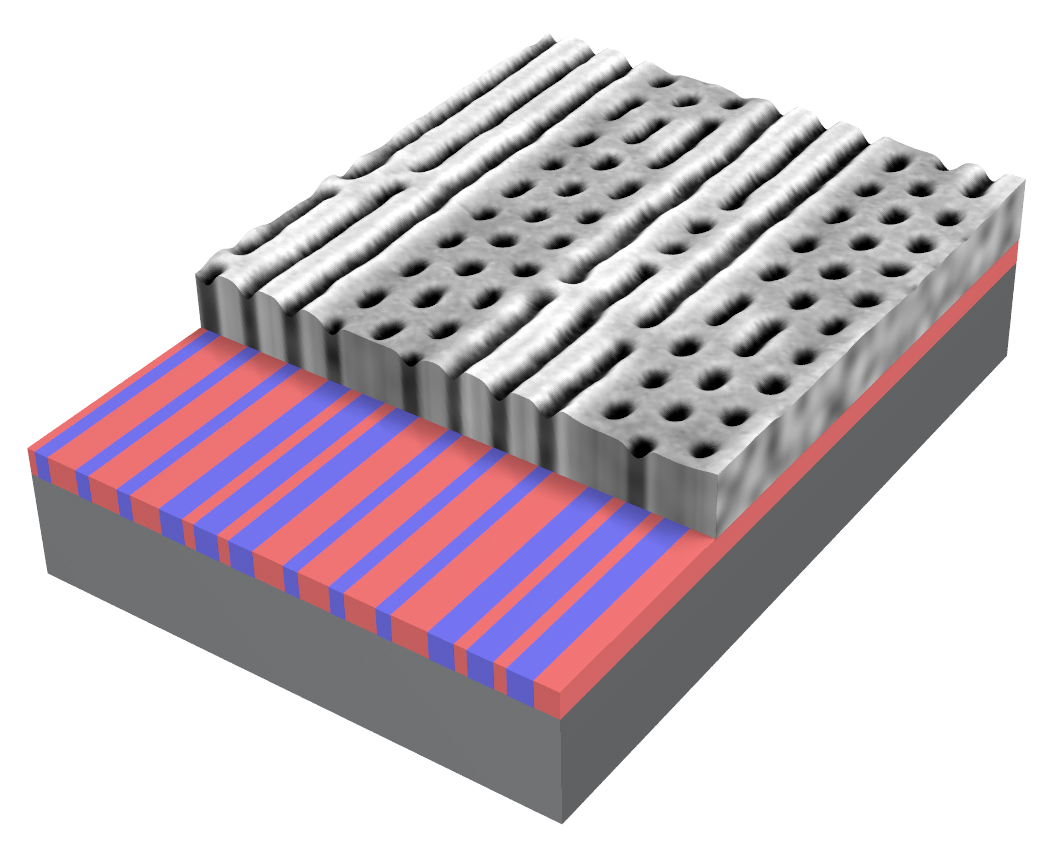Scientists at Brookhaven National Laboratory in the U S have just recently developed a way to direct the self-assembly of multiple molecular patterns within a single material, producing new nanoscale architectures.
“This is a significant conceptual leap in self-assembly,” said Brookhaven Lab physicist Aaron Stein, lead author on the study. “In the past, we were limited to a single emergent pattern, but this technique breaks that barrier with relative ease. This is significant for basic research, certainly, but it could also change the way we design and manufacture electronics.”
“This technique fits quite easily into existing microchip fabrication workflows,” said Kevin Yager, “It’s exciting to make a fundamental discovery that could one day find its way into our computers.”
The collaboration used block copolymers—chains of two distinct molecules linked together—because of their intrinsic ability to self-assemble.
To guide self-assembly, scientist create substrate templates. Using a technique called electron beam lithography. A set of block copolymers onto the template,which was then spin, coating, and bake. Thermal energy drives interaction between the block copolymers and the template, setting the final configuration.
The coordinated effort had beforehand found that mixing together different block copolymers allowed multiple, co-existing line and dot nanostructures to form.We had discovered an exciting phenomenon, but couldn’t select which morphology would emerge,” Yager said. But then the team found that tweaking the substrate changed the structures that emerged. By simply adjusting the spacing and thickness of the lithographic line patterns,the self-assembling blocks can be locally converted into ultra-thin lines, or high-density arrays of nano-dots
“In essence,” said Stein, “we’ve created ‘smart’ templates for nanomaterial self-assembly. How far we can push the technique remains to be seen, but it opens some very promising pathways.”
The scientists plan to increase the sophistication of the process, using more complex materials in order to move toward more device-like architectures.
Source: Brookhaven National Laboratory














